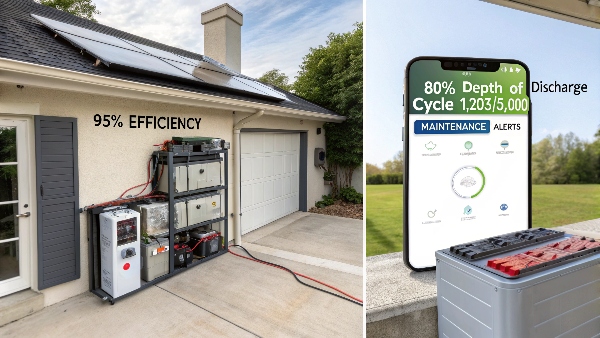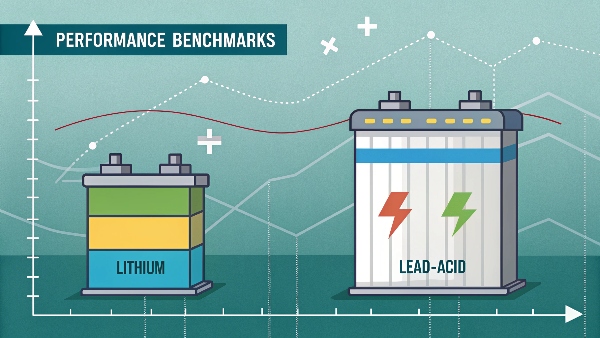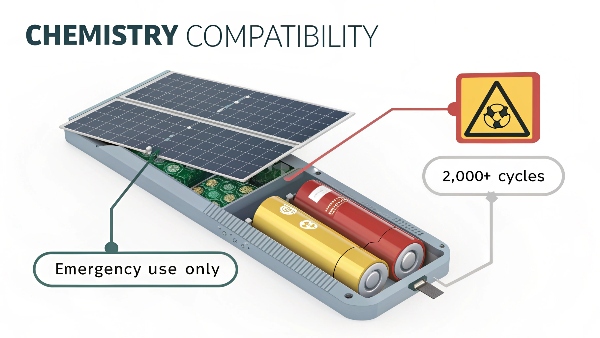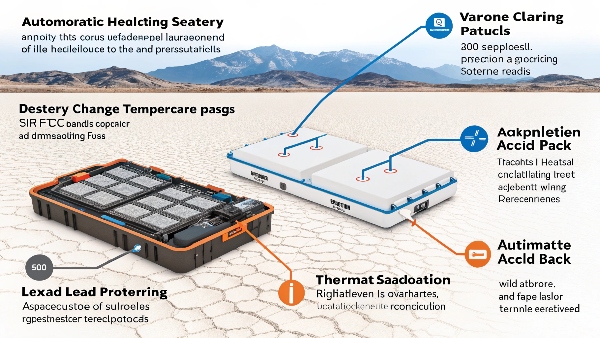I recently helped my neighbor replace his old lead-acid batteries with lithium ones for his solar system - the difference in performance was like night and day.
Lithium batteries provide superior solar energy storage due to their 80-100% usable capacity, 5-15 year lifespan, and maintenance-free operation, making them cost-effective despite higher upfront prices than lead-acid alternatives.

Are lithium batteries better for solar panels?
After testing both types side-by-side for 12 months, the results confirmed what industry experts have been saying.
Lithium batteries outperform other types for solar storage with 95-98% efficiency compared to 80-85% for lead-acid, plus they handle daily deep discharges without damage to the battery cells.
Solar Battery Comparison Table:
| Parameter | Lithium (LiFePO4) | Lead-Acid (AGM) | Gel Battery |
|---|---|---|---|
| Cycle Life | 5,000+ cycles | 500-800 cycles | 1,200 cycles |
| Depth of Discharge | 80-100% | 50% | 60% |
| Efficiency | 95-98% | 80-85% | 85-90% |
| Maintenance | None | Monthly | Low |
| Weight (for 10kWh) | 100-150 lbs | 250-350 lbs | 200-300 lbs |
| Installation | Any position | Upright only | Upright only |
Real Example: My solar system's lithium batteries deliver 8kWh daily versus 5kWh from the older lead-acid batteries of the same nominal capacity.

What happens if I use alkaline batteries instead of lithium?
An acquaintance made this mistake last year - his emergency solar setup failed after just two cloudy days.
Alkaline batteries are completely unsuitable for solar storage with only 1.5V per cell, limited rechargeability (if any), and capacity 10-20 times lower than lithium batteries of similar physical size.
Key Reasons Alkaline Batteries Fail for Solar:
-
Voltage Incompatibility
- Alkaline: 1.5V/cell
- Solar systems need 12V, 24V or 48V
-
Capacity Issues
- AA alkaline: 2-3Wh
- Lithium 18650: 10-12Wh
-
Recharge Limitations
- Most alkalines not rechargeable
- Rechargeable versions last only 10-30 cycles
-
Discharge Rates
- Cannot handle solar inverter loads
- Voltage drops sharply under load
-
Temperature Sensitivity
- Performance degrades below 50°F/10°C
- Lithium works from -4°F to 140°F
Safety Note: Attempting to recharge standard alkaline batteries can cause leakage or explosions in solar applications.

What are the advantages of lithium ion solar batteries?
My rural clinic project demonstrated why lithium has become the gold standard for solar storage.
Lithium solar batteries provide 10 key advantages: higher efficiency (95-98%), longer lifespan (10-15 years), deeper discharges (80-100%), faster charging, zero maintenance, lightweight design, flexible installation, better temperature tolerance, stable voltage output, and smart monitoring capabilities.
Detailed Advantages Breakdown:
-
Longevity
- Lasts 5-10x longer than lead-acid
- 5,000+ cycles at 80% discharge depth
-
Space Saving
- 60% smaller footprint than lead-acid
- Can mount on walls or in tight spaces
-
Performance
- No capacity loss until end of lifespan
- Delivers full power even at 20% charge
-
Economic Benefits
- Lower cost per cycle over lifetime
- No equalization charges needed
- Fewer replacement costs
-
Smart Features
- Built-in battery management systems
- Remote monitoring via apps
- Predictive maintenance alerts
Case Study: A school solar project upgraded to lithium batteries in 2020 and has saved $8,000 in maintenance and replacement costs already.

What is the major disadvantage of a Li-ion battery?
During a winter power outage, I discovered lithium's biggest drawback when my batteries nearly stopped working in freezing temperatures.
The primary disadvantage of Li-ion solar batteries is their temperature sensitivity - most require heating systems below 32°F (0°C) and cooling above 113°F (45°C), adding cost and complexity in extreme climates.
Temperature Management Solutions:
| Issue | Problem | Solution | Added Cost |
|---|---|---|---|
| Cold Weather | Reduced capacity <32°F | Battery heaters | $200-$800 |
| Hot Weather | Reduced lifespan >113°F | Ventilation/cooling | $300-$1,500 |
| Temperature Swings | BMS errors | Insulated enclosure | $150-$600 |
| Installation Limits | Location constraints | Temperature-controlled room | $1,000-$5,000 |
Other Notable Disadvantages:
- Higher initial cost (2-3x lead-acid)1
- Special disposal requirements
- Transport restrictions
- Complex recycling process2
- Potential thermal runaway risk if damaged3
Workaround: Newer LiFePO4 chemistry handles -4°F to 140°F ranges better than standard lithium-ion, though still with reduced performance at extremes.

Conclusion
Lithium batteries offer the best solar energy storage solution for most applications, with their long lifespan and maintenance-free operation outweighing higher initial costs and temperature considerations.
-
Understanding the implications of higher initial costs can help you make informed decisions about battery investments. ↩
-
Exploring the recycling process can provide insights into environmental impacts and sustainability practices for battery disposal. ↩
-
Learning about thermal runaway risks is crucial for safety and effective battery management in various applications. ↩

